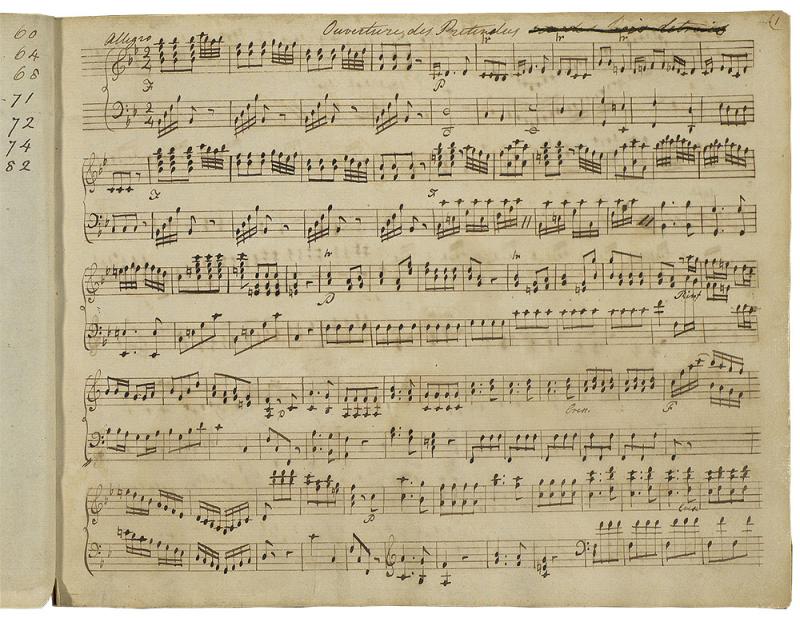Listen to co-curator Juliette Wells discuss Jane Austen’s love of music and attitudes towards women musicians during her lifetime.

A PERSONAL COLLECTION OF MUSIC
Jane Austen took lifelong pleasure in playing the pianoforte, a forerunner of the piano. Because printed sheet music was expensive, she hand-copied favorite compositions borrowed from friends, as did several of her women relatives. The pieces in this manuscript volume were originally published from the early 1790s to 1810. The Austen family’s music books, all of which have been digitized, shed light on the tastes and technical capacities of amateur musicians in this era. Famous names like Mozart and Beethoven are absent. Scenes of playing and singing occur frequently in Austen’s novels, and her characters’ attitudes toward music-making usually indicate their priorities.
Jane Austen (1775–1817)
Juvinile songs & lessons for young beginners who don’t know enough to practise
Autograph manuscript, late eighteenth century
Jane Austen’s House, Chawton; CHWJA:JAH19.2
Hello, I’m Juliette Wells, professor of Literary Studies at Goucher College.
Jane Austen enjoyed playing the piano beginning in girlhood, and daily piano practice was part of her morning routine throughout the years in which she was busily writing and publishing. Readers are often surprised to learn this, because none of Austen’s heroines share her dedication to music-making. Memorably, Elizabeth Bennet of Pride and Prejudice describes herself as playing only “a little” and frankly admits that she would be a better performer if she were willing to “take the trouble of practising.”
During Austen’s lifetime, professional artistic careers were not considered respectable for women. Performing publicly on stage as a musician, an actress, or a dancer was equated with sex work. A gentlewoman played for her own pleasure, as Austen did, or to entertain her family members and friends, as women characters do throughout her novels.
Famously, none of Austen’s heroines, or even her supporting characters, are writers like herself. To discern Austen’s thoughts on women’s creativity and the limitations imposed on their artistic education, we have to read between the lines. When an Austen heroine sings or plays, paints or draws, the author is quietly inviting us to think about what those domestic activities have in common with the work of literary art we are appreciating.
